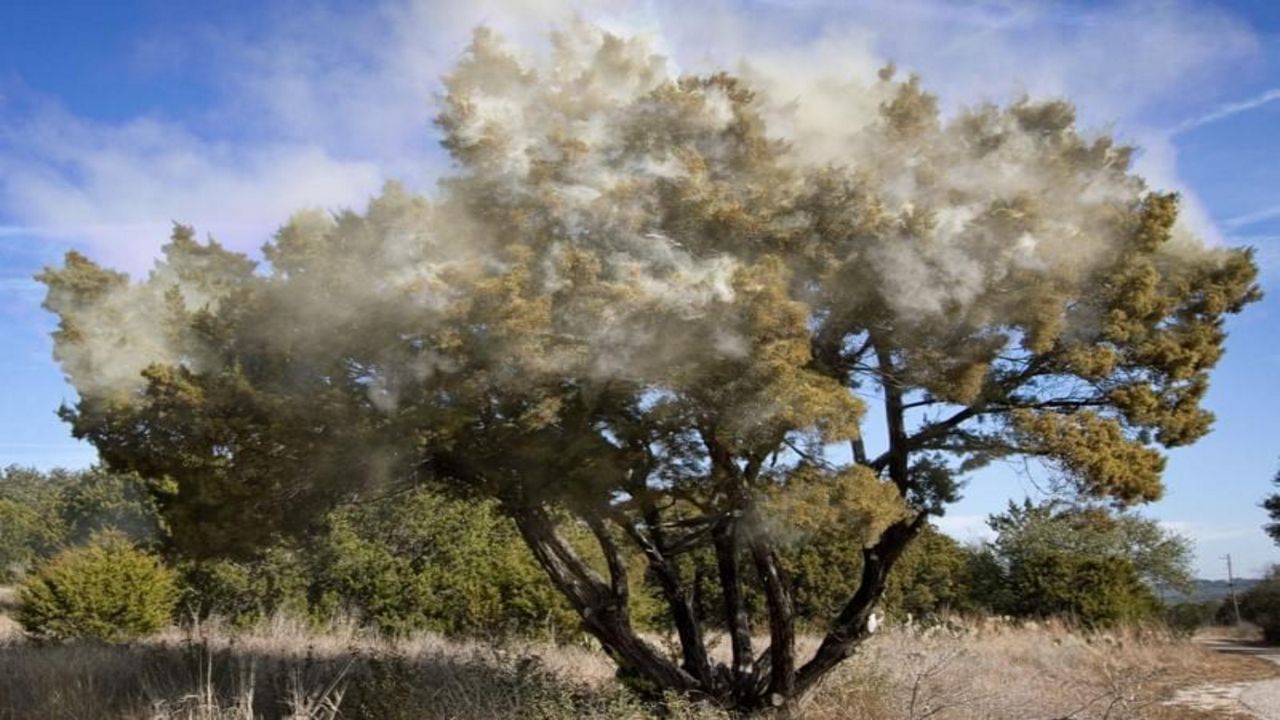If you suffer from allergies and live anywhere within the strip of central Texas that stretches from the Red River to the Rio Grande, you probably already know the misery.
Most trees release their pollen in spring and fall. But in Texas, the Ashe Juniper tree – commonly referred to as mountain cedar – releases its cedar pollen during the winter. The phenomenon, known as “cedar fever,” lasts from about mid-December to mid-February.
January and February are the peak months. This is the time when cedar trees pollinate, releasing billions of pollen particles into the air that travel on the wind for hundreds of miles. People often describe a visible yellow and orange cloud of pollen hovering around the Ashe Juniper tree. The smoke-like pollen clouds often result in false alarms for local firefighters.
Certain weather conditions can maximize the pollen count. Strong surface winds help release the pollen from the trees. If temperatures are warm, that helps to lift the pollen into the air. Strong winds and warm air are both in the forecast in the weeks ahead.
The symptoms can start very suddenly so that it seems almost flu-like.
The symptoms of Cedar Fever can be unpleasant but the flu almost always comes with a high fever. Despite its name, cedar fever doesn’t cause a fever, but inflammation triggered by the allergic reaction may raise the body temperature slightly.
Cedar fever symptoms may include itchy, watery, red eyes; nasal congestion, runny nose and sinus pressure; sneezing; sore throat and fatigue.
Cedar Fever treatment can start with limiting your exposure to the pollen as much as possible by staying indoors, dusting and vacuuming to rid the living spaces of the pollen as much as possible. Start with over-the-counter medications to treat your symptoms. Your medical provider can provide suggestions as to which may be most effective.
If you experience cedar fever, or if symptoms linger or worsen, schedule an appointment with a board-certified allergist to discuss treatment options and lifestyle changes.
Our team of meteorologists dives deep into the science of weather and breaks down timely weather data and information. To view more weather and climate stories, check out our weather blogs section.



